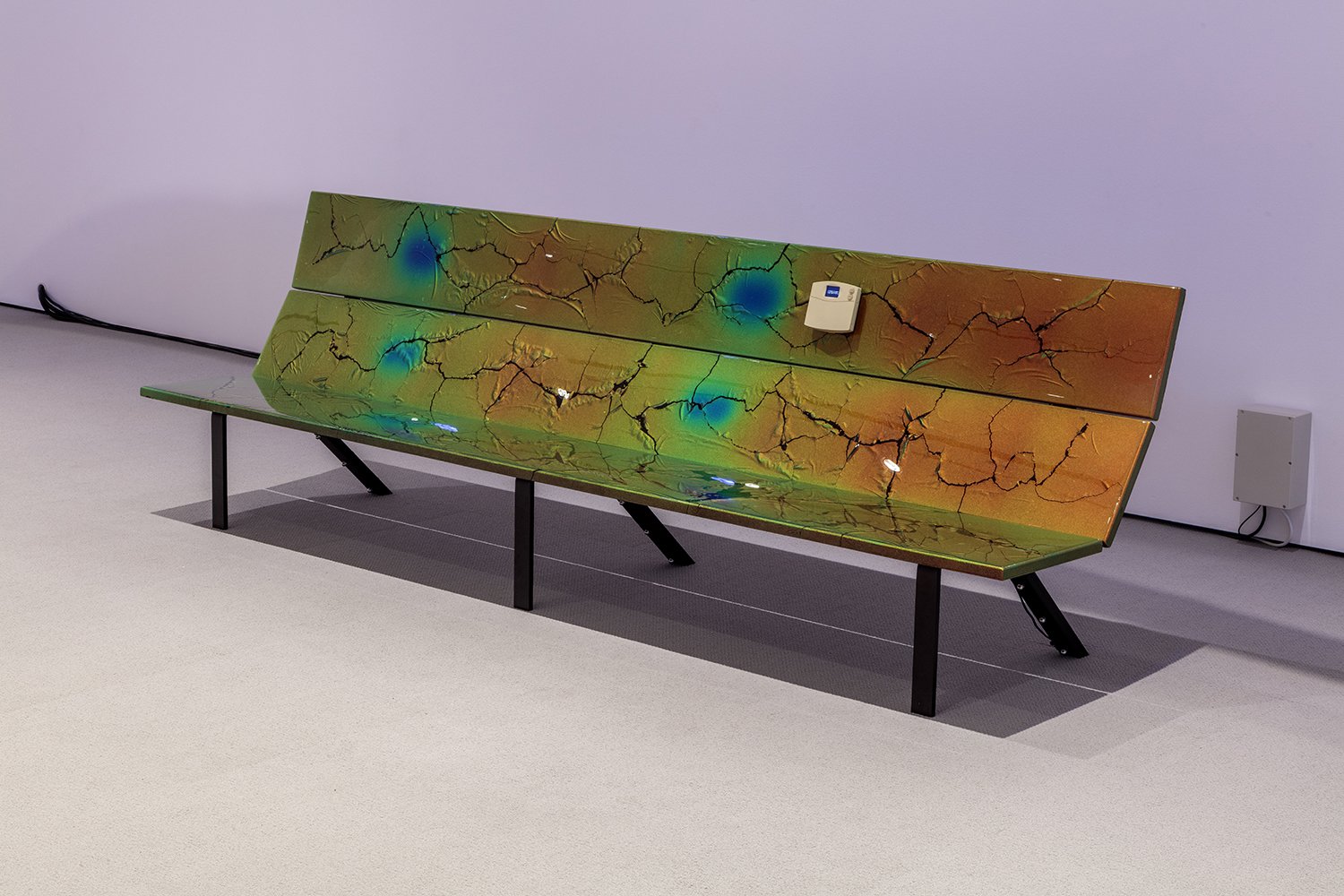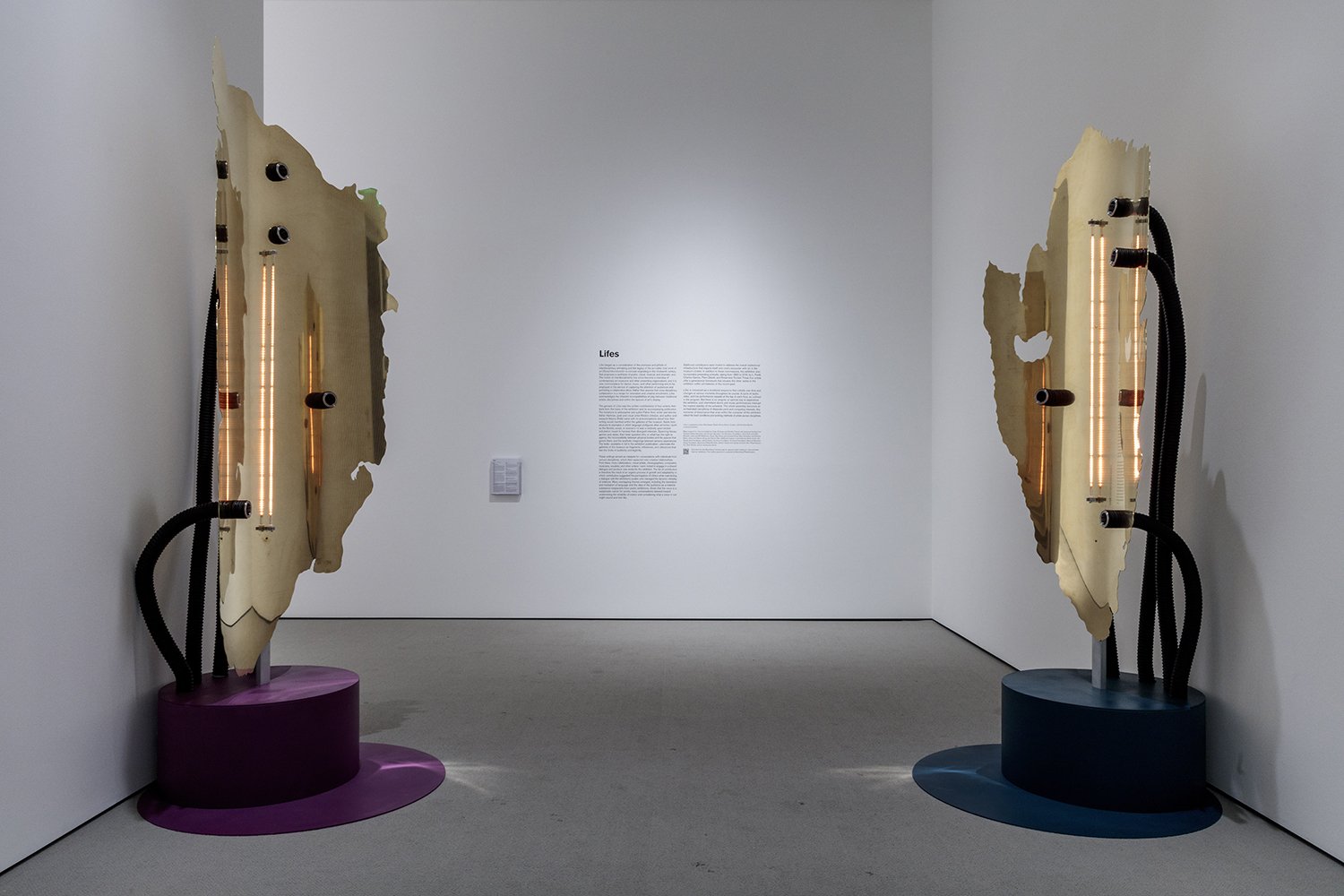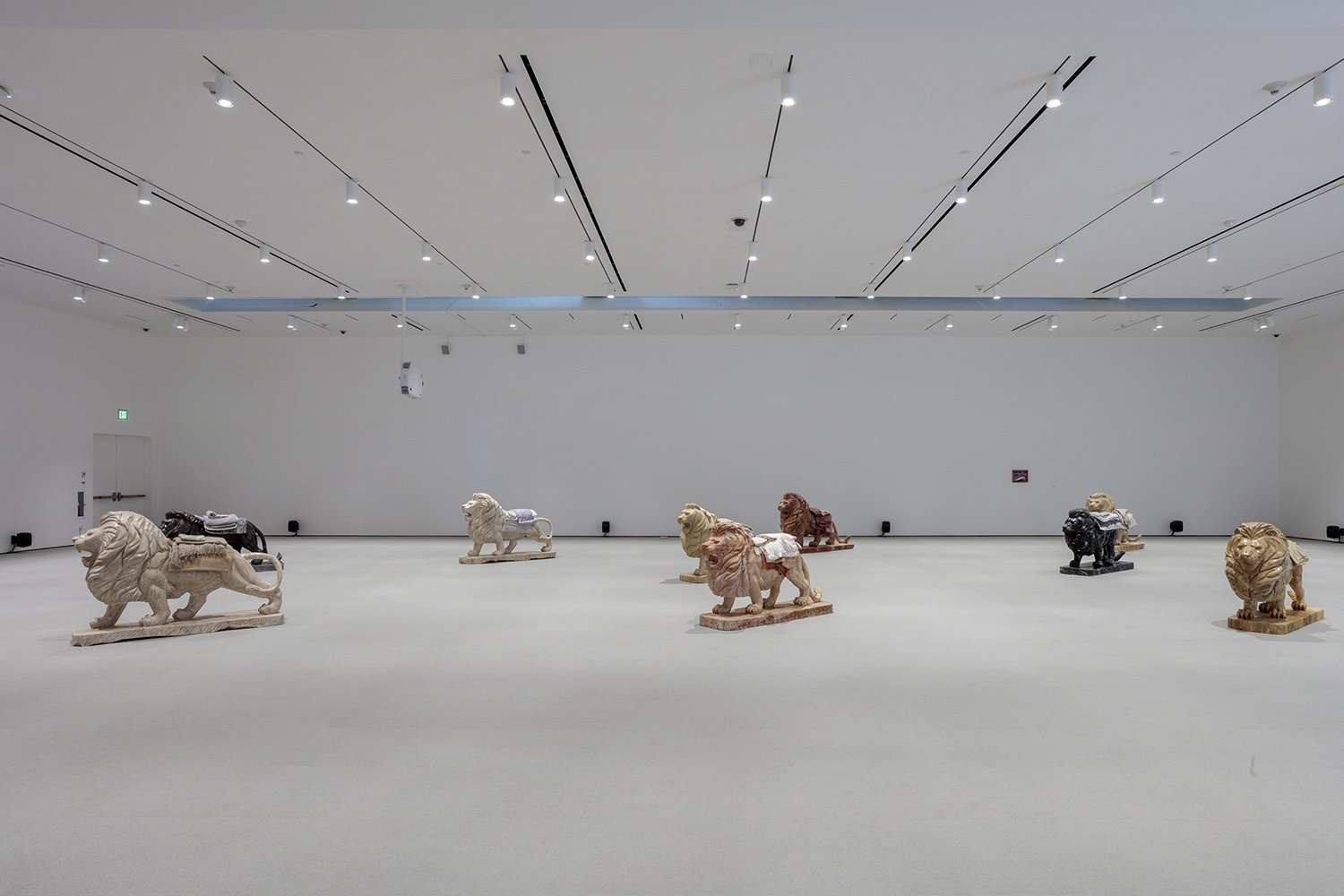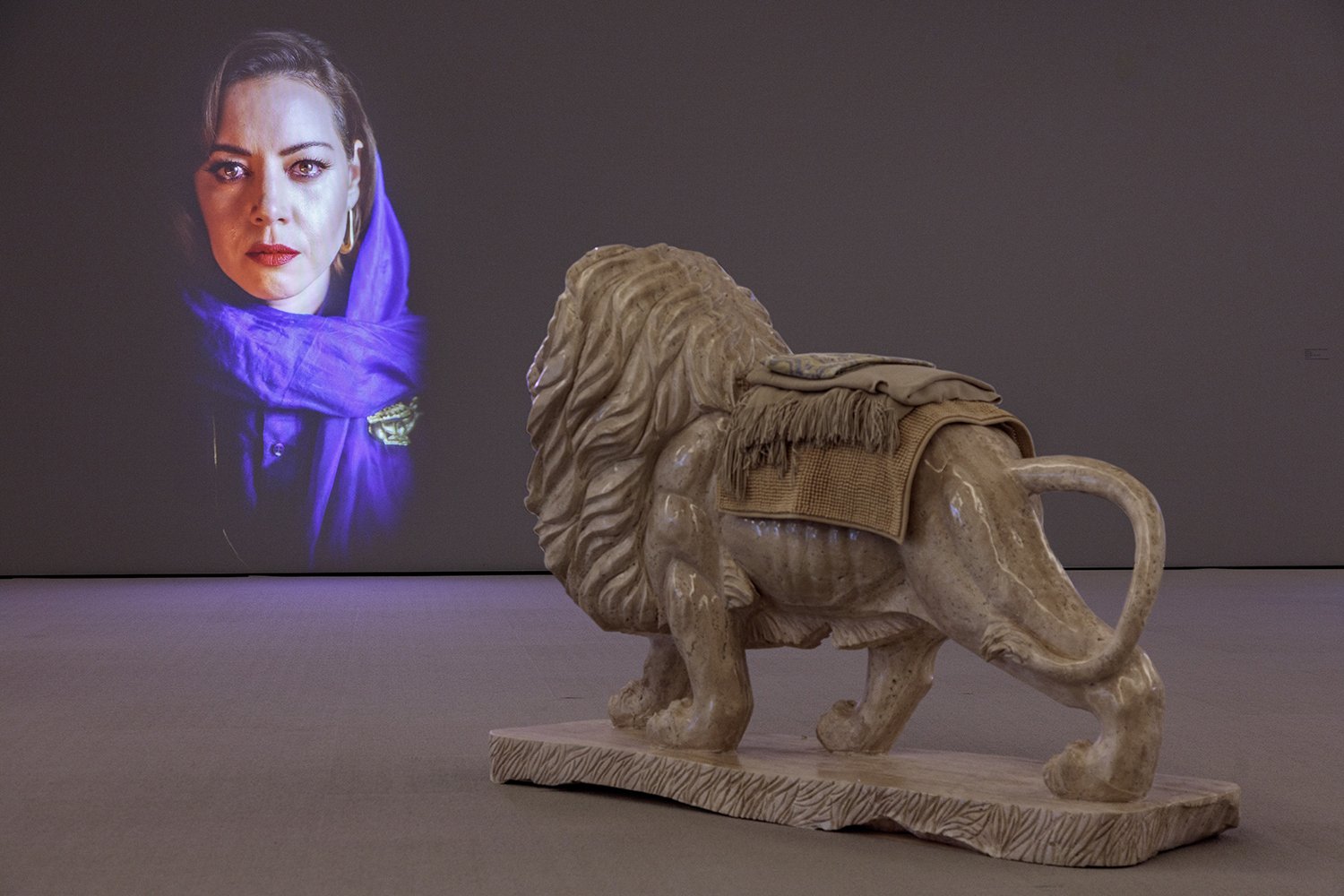Sit on it, wait for it, smell it, touch it, let it wash over you. Lifes, the bravely radical and experimental exhibition at The Hammer Museum, is a choose-your-own-adventure-style viewing experience, an astral projection of interdisciplinarity, that challenges what it means to see, feel, and hear an art exhibition. Writing about Lifes is like explaining a chasing dream to a paranoid schizophrenic, or a Chia Pet to a ficus, or a controlled burn to a fire. Conceived as a durational sequence that unfolds over time, artists and collaborators will respond to a series of commissioned philosophical and theoretical texts that question the rights of agency, the incompatibility between physical bodies, and how the aesthetic experience triggers our senses. Upon entering the exhibition, a set of “aura burners” by Jules Gimbrone and Micah Silver [(Energy Character (Micah) and Energy Character (Jules)] are metallic and metaphysical neuralizers that cleanse your chi. Further inside, Charles Gaines’ Falling Rock (2000) drops a 65-pound piece of granite every ten minutes onto a fresh pane of glass, a clash between the mechanics of time and the abstractness of violence. And ominously wrapping around the galleries is Morag Keil’s Vomit Vortex, a mysterious pneumatic tube system that traverses a canister of fake vomit, a statement on the banality of the nausea of our contemporary existence. Perhaps the most visually obvious work in the space is Nina Beier and Bob Kil’s All Fours, a suite of nine statuesque lions—typically seen at the entryways of buildings—which come to life in the form of a performance where dancers ride the carnivores’ muscular bodies for ten minutes each hour, a response to a series of scripts by Asher Hartman. There is also Cooper Jacoby’s How do I survive? (a mouthful of old firsthand), a bench outfitted with an AI-scripted thermostat—like a Magic 8-Ball, it answers the age-old question: “how do I survive.” The answers change based on fluctuations in heat and humidity, a polygraph for the existentially curious. The bench is also treated with heat-sensitive, liquid crystal pigment paint that registers the thermal impression of the sitter. Another poignant work is Fahim Amir, Elke Auer, and Nima Nourizadeh’s AFGHANISTAN MON AMOUR (ENQUELAB ULTRAMARINE), a video work starring Aubrey Plaza that is dedicated to the people of Afghanistan who have resisted imperialist expansion for centuries. And there is legendary German conceptual artist Rosemarie Trockel’s Parade (1993), where a corps of silkworms parade and dance to a composition of music by Kurt Hoffmann, creating an abstracted pattern that is analogous to the exhibition as a whole and it’s ability to let its individual parts speak for the brilliant and beautiful “curatorial assemblage” that is Lifes. Click here to find out more about the exhibition and find a full map/list of artists and works. photos :Lifes, Hammer Museum, Los Angeles, February 16–May 8, 2022. Photo: Joshua White / JWPictures.com.





